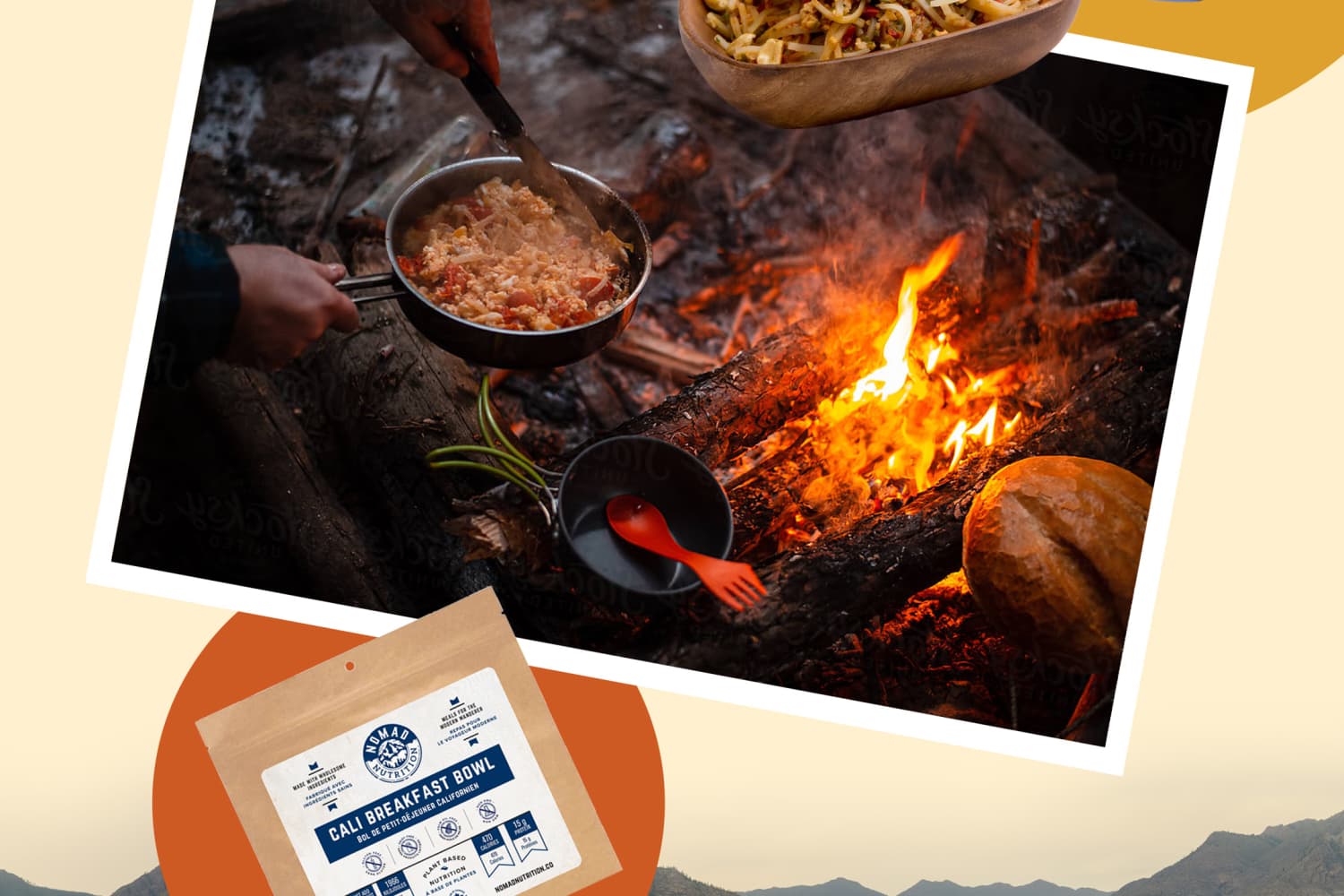We independently select these products—if you buy from one of our links, we may earn a commission. All prices were accurate at the time of publishing.
Two Novembers ago, equipped with only a pack of hot dogs and a bag of marshmallows, my aptly named Newfie dog, BearDog, and I set up camp in Northern New Mexico. I picked up both items during a cross-country road trip grocery stop, trying to satisfy my desires for protein and dessert. Neither of us were at all upset with this camping menu, mind you; I love a charred campfire weenie on a stick more than most things (and it did pair incredibly well with the dregs of my boxed cabernet, after all).
Even if you’re not a huge camper, I know I can’t be the only one who has noticed that campground cuisine has gotten, well, wildly good and delightfully elaborate over the last few years. As a native Floridian who is no stranger to a freeze-dried meal (thanks, space camp field trips), it altered my universe to see all the camping food options that exist outside of the dinosaur egg oatmeal packets, astronaut ice cream, and dry chicken cutlets of my Girl Scout camping days.
Thorough food journalist that I am, I tested my hypothesis by first eating my way through the ready-to-eat (RTE) meals section of REI. Backpacker’s Pantry’s Pad Thai? A hit, one I’d enjoy fireside or just on my couch. Good To-Go’s fig-studded granola (complete with powdered milk!) was the best store-bought granola I’ve eaten in a long while. And it bears no clarification that Trailtopia’s Rocky Road Pudding (with all the toasty almond slivers and mini marshmallows of my dreams!) is the ideal way to end a campfire dinner.
It’s easy to see why RTE meals have gotten exponentially better, as the camping industry has steadily become one of major culinary imports. According to a study conducted by the Kampgrounds of America (KOA), 2023 will be the year that 36% of campers hit the trails for culinary experiences (only second to the 40% of campers who seek out trips based around natural events like eclipses, animal migrations, and meteor showers).
REI has been growing its camping cuisine section steadily over the last few years to suit epicurean campers who want food that’s equal parts fuel and flavor, offering new brands with culinary identities all their own like the U.K.’s own Firepot Food, Nomad Nutrition Co. (which offers dishes like Ukrainian borscht and Spanish paella), and gluten-free RTE brands like Heather’s Choice. On a recent run to re-up my sampling stash, the helpful REI sales associate (big shout out to Brody in Flagstaff, Arizona) even stopped to exclaim, “Whoa, that’s new,” at the ever-expanding shelves in the campfire cooking section.
Grocery store brands are also leaping into the outdoors space, like the camping-friendly pouches of A Dozen Cousins beans, Verve Instant Coffee packets, and Country Archer Provisions Jerky, all of which you can find at many REI locations. There’s even a whole new industry of camping cookbooks, like camp cocktail mixology guides, the recently released Cook It Wild, and Camp Joy, the new campfire cooking zine from Joy The Baker.
Peak COVID-19 saw many of us all seeking connection outside, where al fresco dining became not only key to maintaining safe distances between friends, but also for personal and cultural connection. Nearly half (46%) of North American campers took their first camping trip during 2020, or restarted camping after not having camped in recent years, too: “We saw a spike during the pandemic with so many new people participating in camping and backpacking, and finding close-to-home ways to get outdoors,” says Soraya Smith, owner and head chef of the RTE meals brand Backpacker’s Pantry. “The trend [also] extends beyond the trails as individuals realize these meals are also useful for everyday quick and nutritious dining options, as well as to be stored in the emergency kit.”
With inflationary prices affecting how we travel, camping remains a cost-effective way to get lost and eat well at the same time — even if just to a nearby state park to grill up for the evening. Plus, no matter your cooking skill, food will always taste better outside.
Campground cooking is also such a salve to the never-ending aspirational cooking one-upmanship one can see in other food spaces. You won’t earn a Michelin star cooking at Yosemite (TBH it’s harder to get a camping spot at Yosemite than a Michelin star these days), but that’s hardly the point. Because there are inherent limits, a campground kitchen can be freeing, too. One must make do with what they’ve packed, no matter if it’s PB&J supplies, an RTE mac and cheese, or freshly caught carp. The hottest seat in town will always be the one right next to the campfire, as far as I’m concerned.

